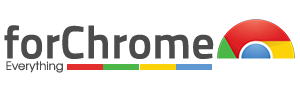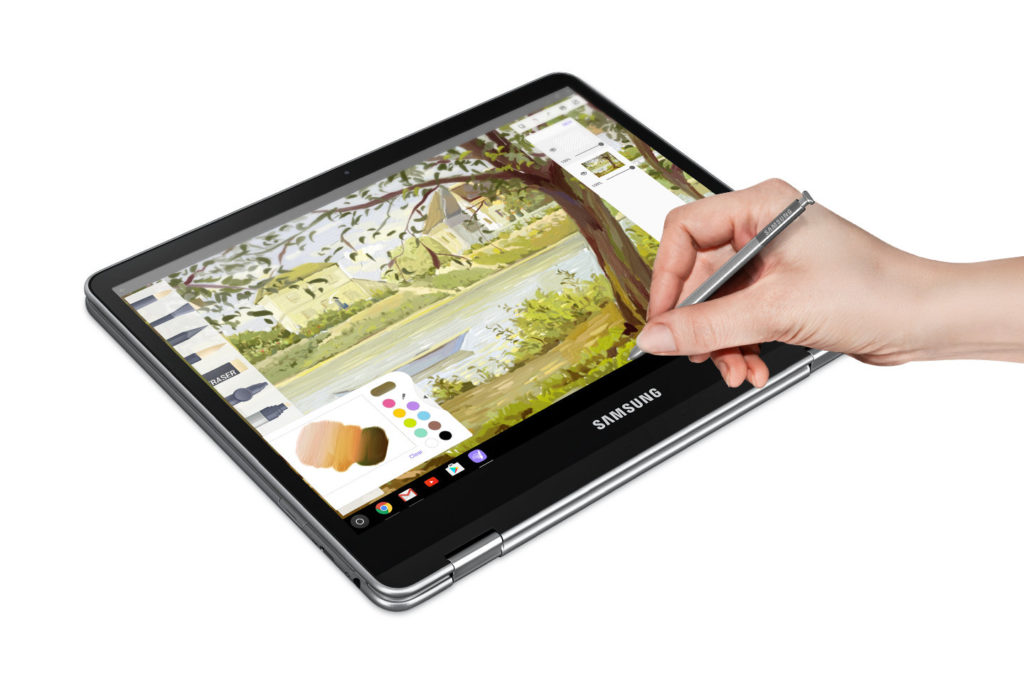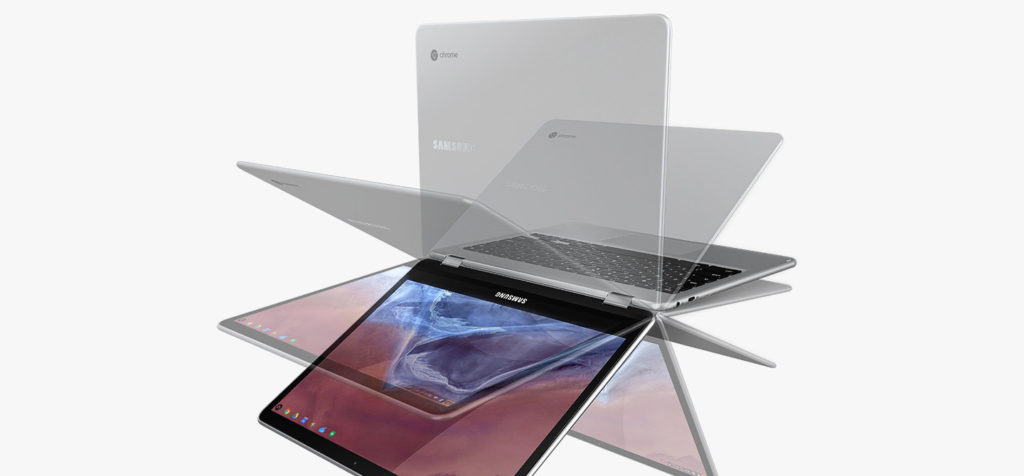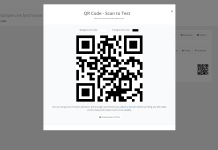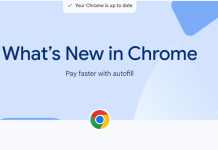The main difference between these systems is their processors. The Chromebook Plus runs on an ARM processor and costs $449, while the Chromebook Pro gets a more powerful Intel chip and costs $549.
How do you decide between the two? Easy. The Plus is meant for basic web browsing and gaming. Think people who check their email or use Google Drive often. The Pro, on the other hand, is for folks who tend to browse the web with 20 tabs open, while streaming music through Spotify and perusing Twitter and Facebook.
Samsung Chromebook on Amazon
Handsome hardware
The Plus and Pro are thin and lightweight at just 0.55 inches thick and 2.4 pounds, respectively. I packed the Chromebook Plus into my backpack along with my regular MacBook Air 13-inch and hardly noticed the added weight.
Unlike most Chromebooks, the Plus and Pro also double as tablets thanks to their 360-degree-hinged, 12.3-inch, 2,400 x 1,600 resolution displays. I watched some movies and browsed the web and found the Pro’s display to be crisp and colorful.
Apple’s 12.9-inch and 9.7-inch iPad Pros are both thinner, lighter and have higher resolution screens than Samsung’s Chromebooks. But Apple’s offerings are also far more expensive. The 9.7-inch iPad Pro starts at $599, while the 12.9-inch model starts at $799. And that’s without the added cost of a keyboard and stylus.
Styling stylus
Speaking of styluses, the Chromebook Plus and Pro’s each have small ports built into their sides to store the pens when not in use. The iPad Pro does not.
Writing with the stylus feels incredibly natural thanks to a bit of added resistance provided by its tip and Google’s machine learning magic.
Over the last couple of years, Chromebooks have quietly infiltrated the computer market. Google’s affordable “just a browser” devices are the best-selling computers in schools, and they’re percolating around boardrooms and cubicles. Last fall, more people bought Chromebooks than Macs—and that’s not going to switch back anytime soon. Now Google’s out to convince you, regular human, person of sound mind and reasonable budget, that you ought to buy a Chromebook.
The consumer Chromebook onslaught starts with Samsung’s Chromebook Plus and Pro, which are on paper the most well-rounded Chrome OS devices ever. The Plus starts at $450 and is available next week, and the Pro will be $550 when it ships in March. Both fit right into the normal-person laptop budget. They do all the Chrome OS things, have great and flippy touchscreens, and even support pen input. And best of all, they run all of the millions of apps in Google’s Play Store. They’re part smartphone, part tablet, part laptop, combined in a way that feels like the computer of the future.
I’ve been using the Pro for the last couple of weeks. Like I said, it sounds great… on paper. In reality, this brilliantly polymorphic computer still feels more like a science experiment.
The Good Kind of Cheap
It shouldn’t be that hard to make a good laptop. Most people want the same things: A relatively light and thin body, attractive enough you don’t mind being seen with it in public. Well-spaced, clicky keyboard, and spacious, smooth trackpad. High-res screen, and enough power and battery to get you through even an extra-long day at work. Pretty straightforward, right?
According to your average $500 Best Buy Special, this is very hard. The Chromebook Pro proves it’s at least possible. At about a half-inch thick and 2.38 pounds, it’s smaller than almost every laptop not named MacBook. It doesn’t ooze class and wealth every time you open the lid, but the magnesium alloy body (mine’s silver, but yours will be black) at least won’t look out of place in Economy Comfort. Even more so once you peel off the unsightly Energy Star sticker. The rounded edges and exposed hinge give it a decidedly utilitarian look—you’re not holding a future Smithsonian exhibit in your hands, you’re holding a laptop. And that’s just fine.
The 12.3-inch, 2400×1600 display is excellent, and works well as a touchscreen too. But it really shines when you pop the tiny stylus out of the body of the Chromebook Pro. The stylus matches the one in Samsung’s Galaxy Note phones, and works just as well: you can draw, doodle, take notes, the whole nine. Google’s Keep note-taking app supports the pen as an input tool, and works fabulously. Trust me: there’s nothing quite so futuristic as signing a contract right on your computer screen.
